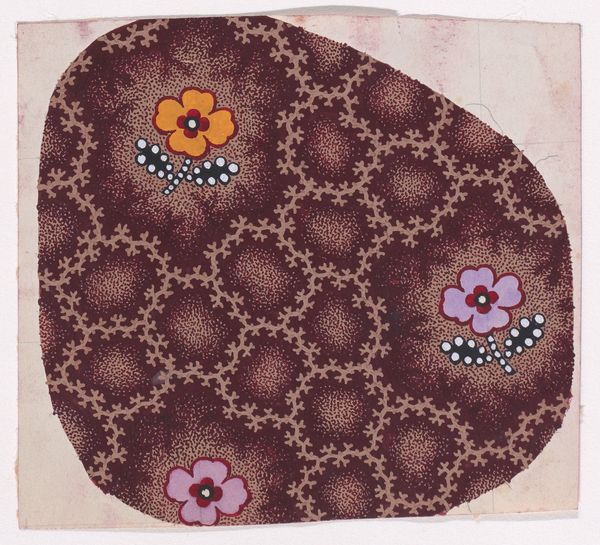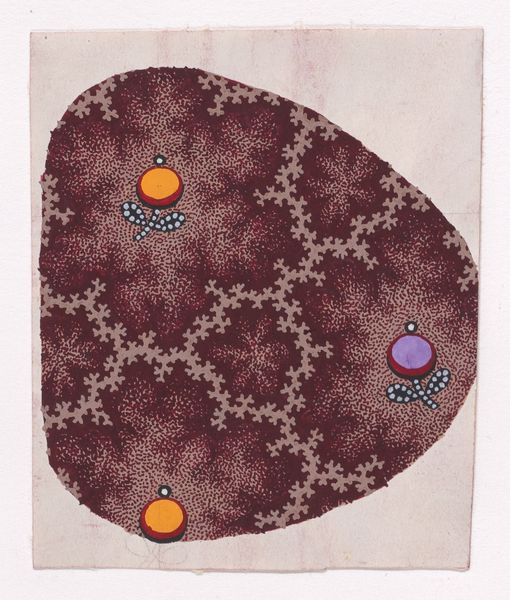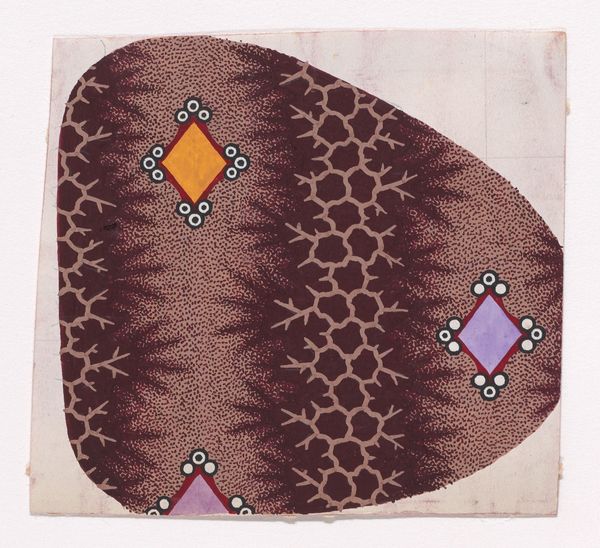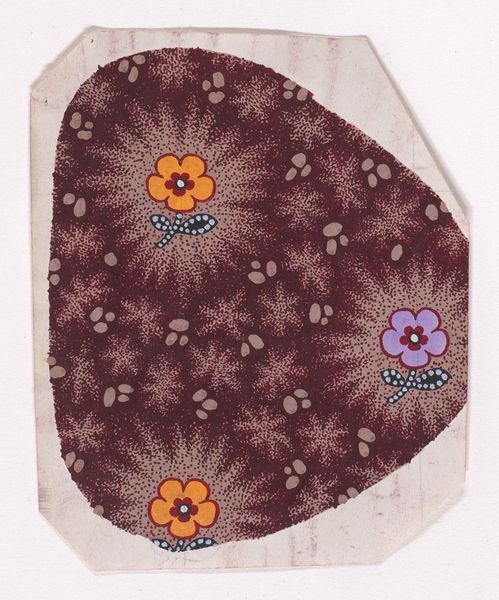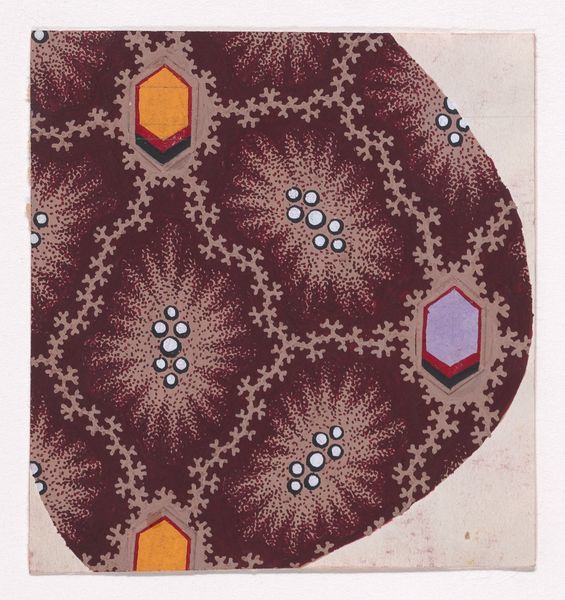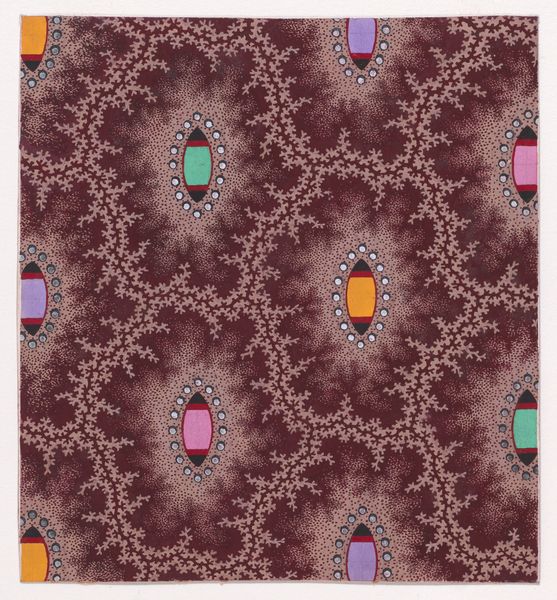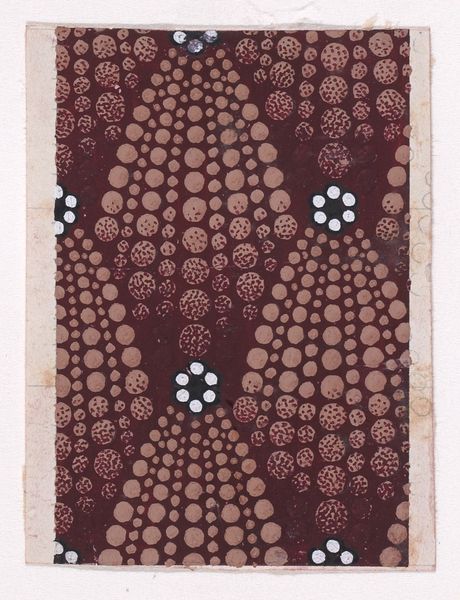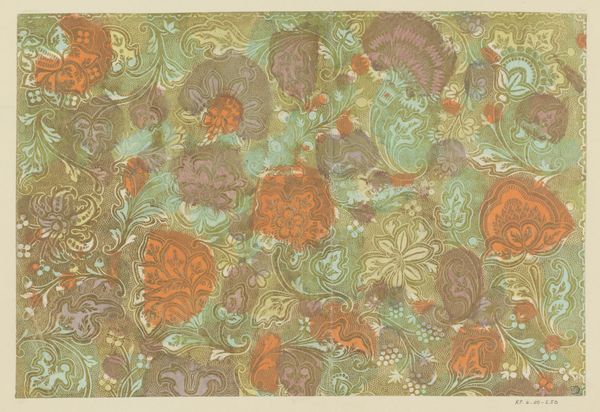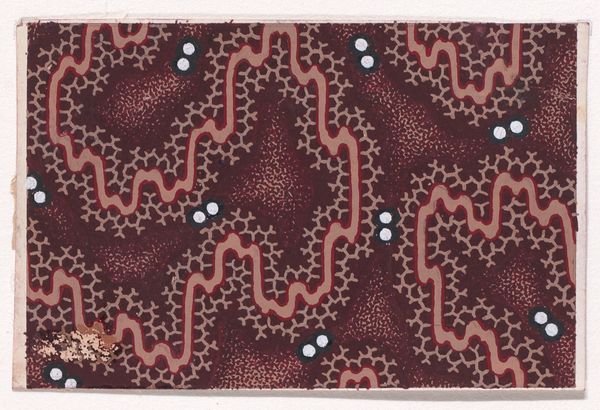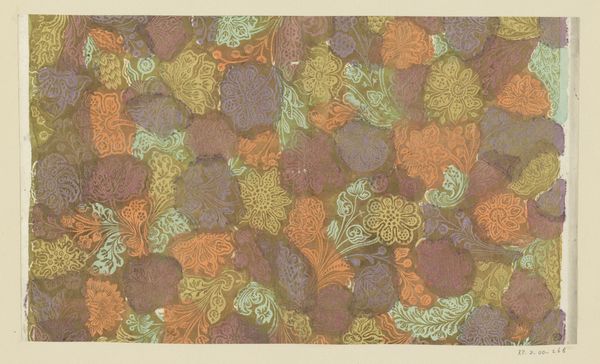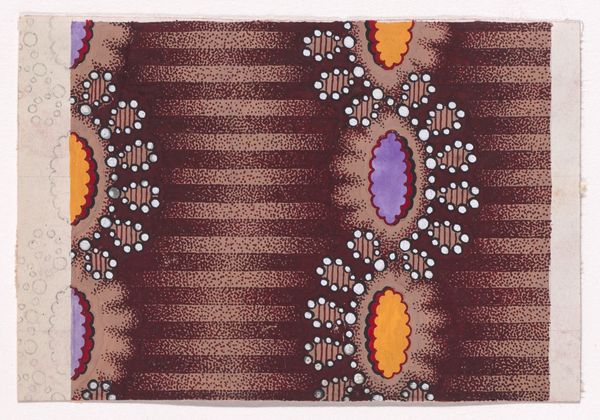
Textile Design with Alternating Rows of Curved Hourglass Shapes Flanked by Two Pearls Framed with Garlands of Stylized Leaves with Offsetting Thorns 1840
0:00
0:00
print, textile
# print
#
textile
#
decorative-art
Dimensions: Sheet: 2 5/8 × 3 1/16 in. (6.7 × 7.7 cm)
Copyright: Public Domain
Curator: Here we have an 1840 textile design, presently held at the Metropolitan Museum of Art. Editor: It’s… well, my first reaction is that it's strangely unsettling, almost alien. The colour palette combined with those symmetrical shapes creates an oddly claustrophobic feel. Curator: Claustrophobic? Intriguing. The anonymous design features alternating rows of curved hourglass shapes, each flanked by two pearls and framed by garlands of stylized leaves and thorns. Consider these individual elements: hourglasses signifying time and mortality, pearls, emblems of purity and beauty framed by thorny garlands. How might these seemingly disparate symbols come together? Editor: To me, it feels like a coded message about societal expectations for women. The pearls represent idealized feminine virtue, almost a trapping within the design – they are literally caught inside the shape, and then encircled by prickly garlands! It speaks to the impossible constraints put upon women at the time. Curator: That's a compelling reading! From an iconographic perspective, thorns often allude to sacrifice. Perhaps we can decode that these sacrifices, demanded for the sake of purity, are embedded in lived experience itself: beauty framed in a potentially harmful reality. Editor: The background patterning, with its branching floral motifs, reminds me of wallpaper found in oppressive, patriarchal spaces in literature, further intensifying that sensation. How passive decorative items like fabrics have historically been used as an unspoken means to establish restrictive dynamics. Curator: Or perhaps these repeating floral vines demonstrate growth. If these symbols carry emotional weight, consider how repeated design makes a psychological space of them, imprinting memory. Editor: Perhaps it represents resistance too, since design—craft itself—becomes a powerful means of subversion for so long denied public agency. Curator: Whether a subversion or a sorrowful encoding, considering art in connection to history allows new perspectives, always. Editor: Exactly; this unassuming design whispers about the experiences of countless people of the past, providing much to ponder about power dynamics even now.
Comments
No comments
Be the first to comment and join the conversation on the ultimate creative platform.
